I have waited years… a decade, actually… to visit Uluru (also known as Ayers Rock). But instead of witnessing this sacred Aboriginal site in all its glowing red glory, we arrive to find this:
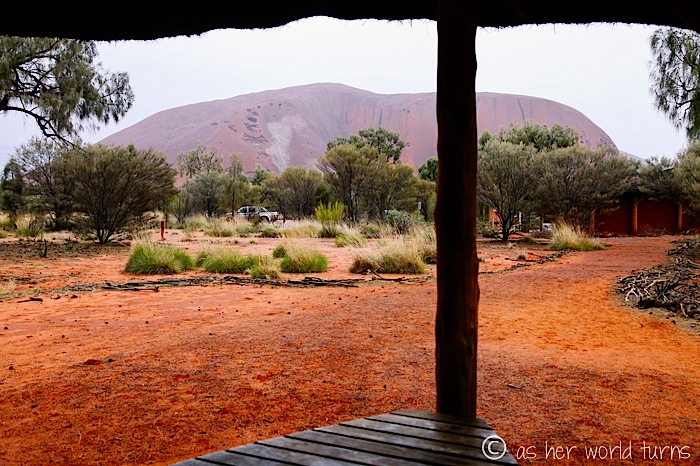
I grovel to the weather gods: just a little break of sunshine, pretty please?
But no dice.
If there is a silver lining in this (literal) cloud, it’s that rain creates waterfalls flowing down the side of Uluru. Since it rarely rains here, it is special that we get to witness these shiny black streams trickling down the face of Ayers Rock.

I vented on Twitter that I wish Lightroom (my editing software of choice) had a “sunlight” button. I swear that if you asked a group of photographers what their superhero power would be, 9 out of 10 would say to control the weather.

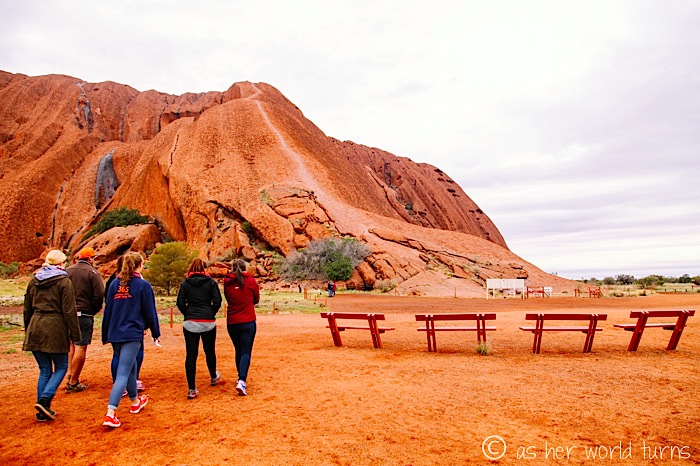
I didn’t know this until our arrival, but it is possible to actually hike on Uluru. Weather often prohibits this — the trail is closed in hot weather (a frequent occurrence) and in rain (a rare occurrence). But even when the trail is officially open, local Aborigines request that tourists do NOT hike Uluru, as it is a sacred area for their tribes. The trail is shut down during our time there so it is not an option.
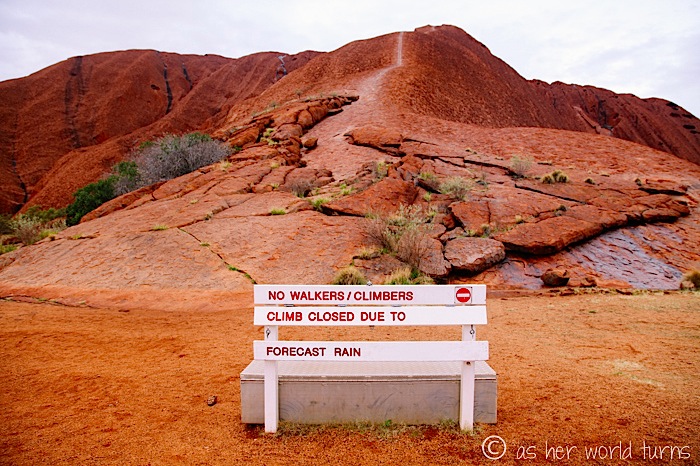
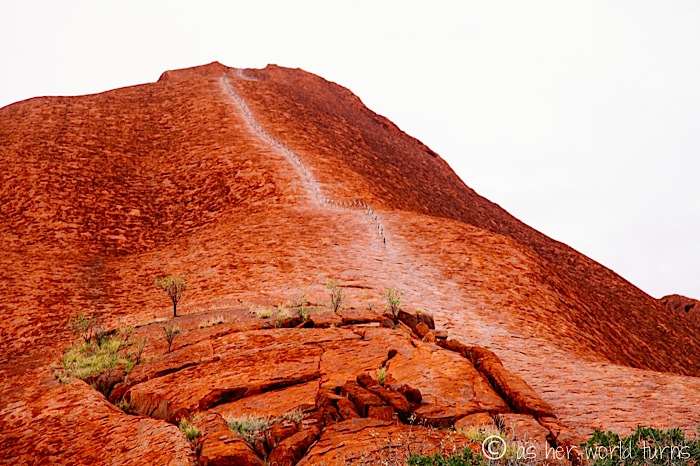
Angus leads our group through a small stretch of the base walk to visit a few key places and explain the geological and historical importance of this site. Tomorrow we will return bright and early to walk the entire 10k loop around Ayers Rock.
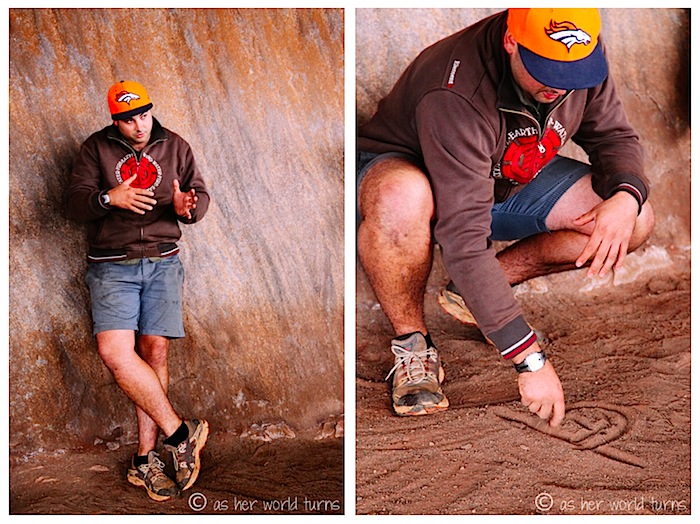
From a distance (did anyone else just hear Judy Collins?) the rock looks like one big, perfectly oblong shape. But up close it is dotted with dimples and cracked with crevices.
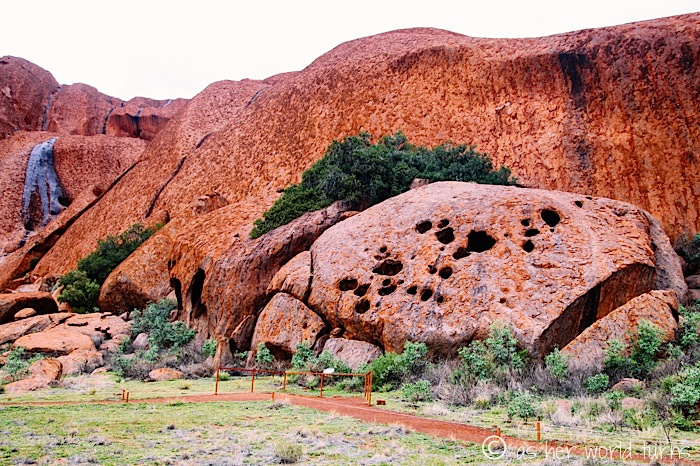
Just like in Kata Tjuta and Kings Canyon, I find these nooks and imperfections so neat to look at and photograph.
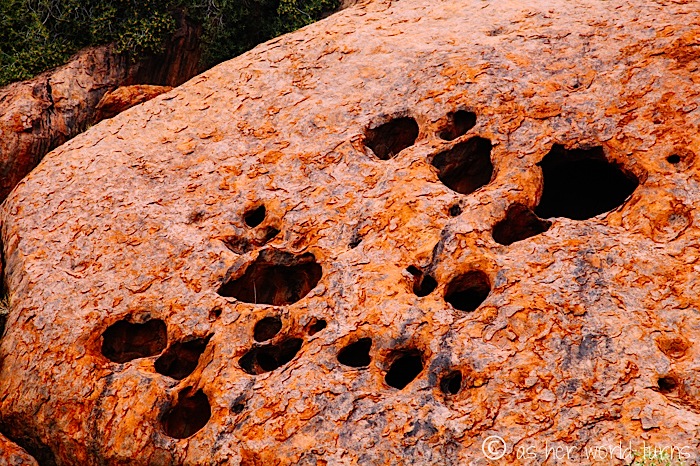
Our first time seeing the rock up close. Right after Angus gives us permission to touch it, he jokes that we’ve all been slapped with a $5,000 fine.

Cave markings on the wall. I believe these are actually recent and not ancient Aboriginal carvings.
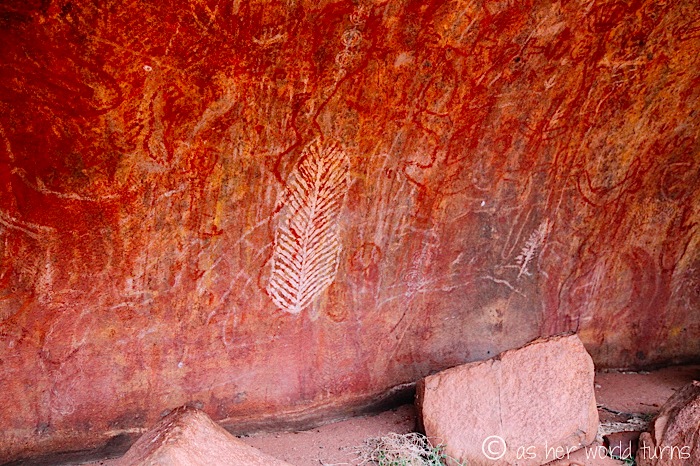
We round another curve of the rock to find a giant overhang.

Angus uses a stick to draw these symbols in the dirt. For the life of me I cannot remember their significance!
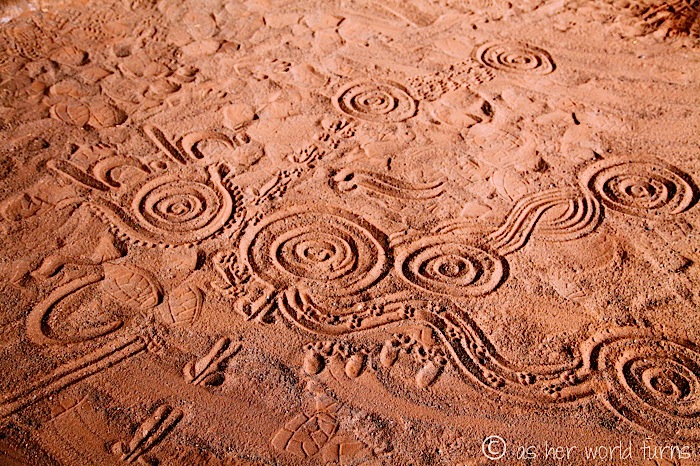
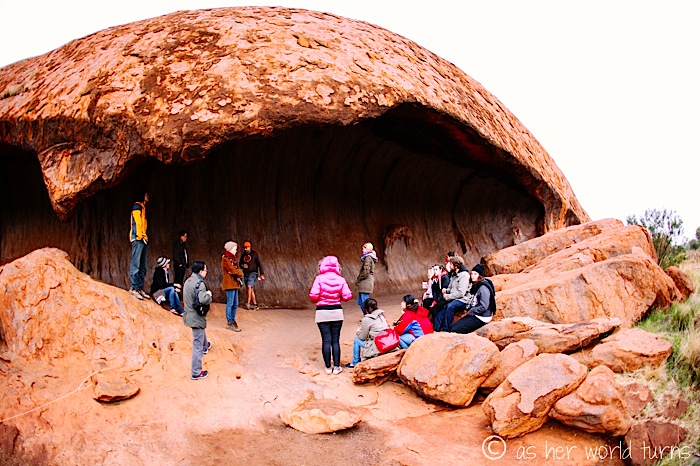
Here’s a map of Uluru as seen from above. Does this conflict with your expectations of the rock as a perfect oval shape? It did for me, but these bends and bulges give it so much more character. Plus it’s more interesting to photograph than a smooth surface.
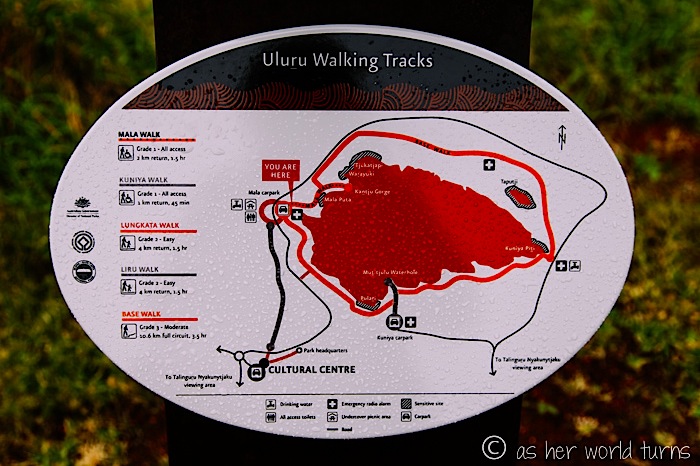
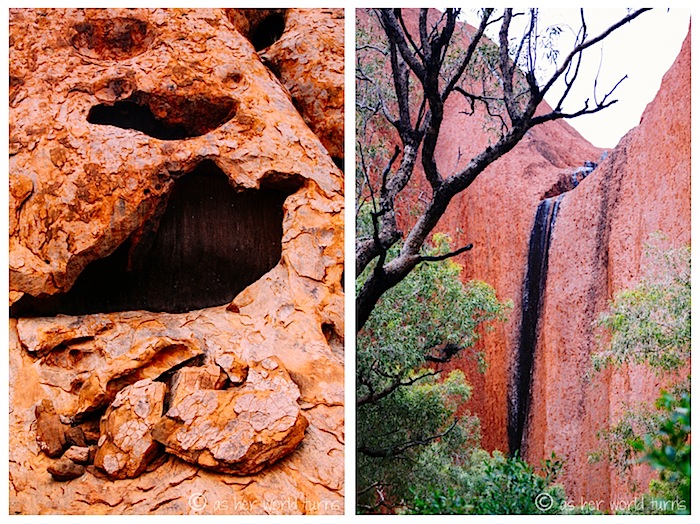
The early 20’s / European girls on our tour:

This waterfall is the highlight of our short walk.
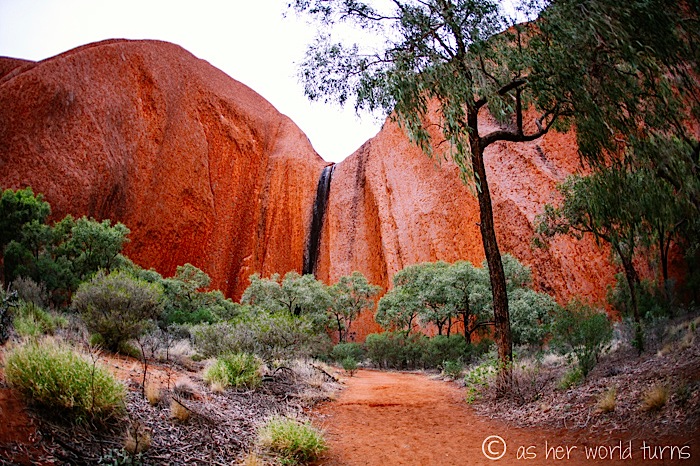
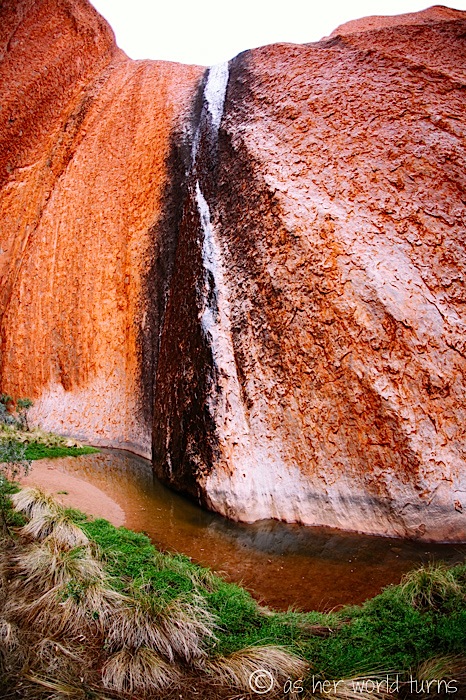
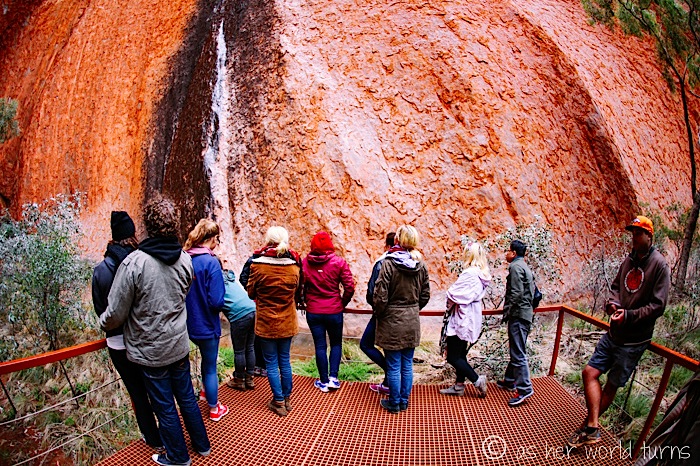
Certain sections of the rock are especially sacred for the Aboriginal tribes and photography is not allowed. (If you know Spanish you are probably chuckling at “Mala Puta” on the sign below. I have no idea what it means in the local language but it’s not what you’re thinking.)
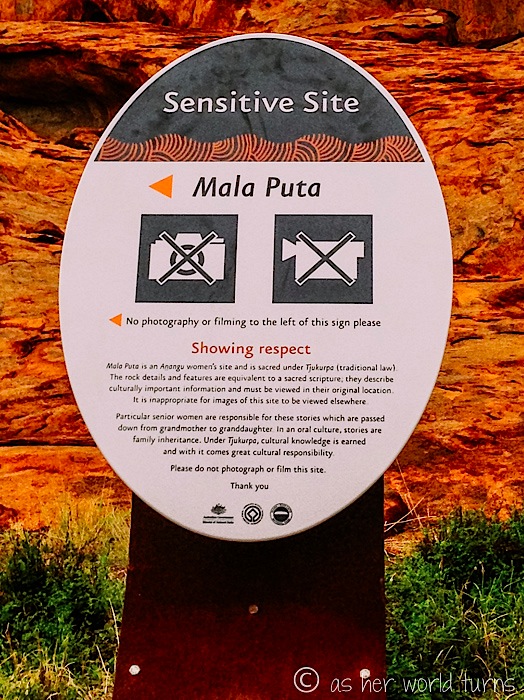
We arrive back at the van just as rain starts to pour down. It’s such a unique sight that Angus even takes photos — and he’s here twice a week with tour groups so you know it’s special when he takes out his camera.

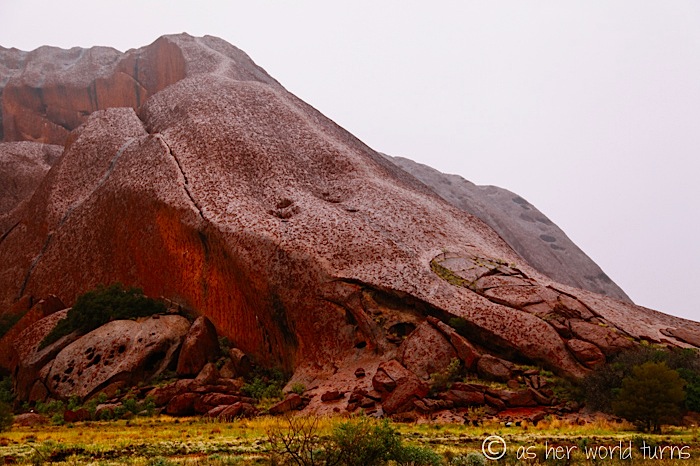
We head to this famous vantage point for sunset… except there’s no sun to set.

We break out the bubbly anyway and pose for obligatory photos.
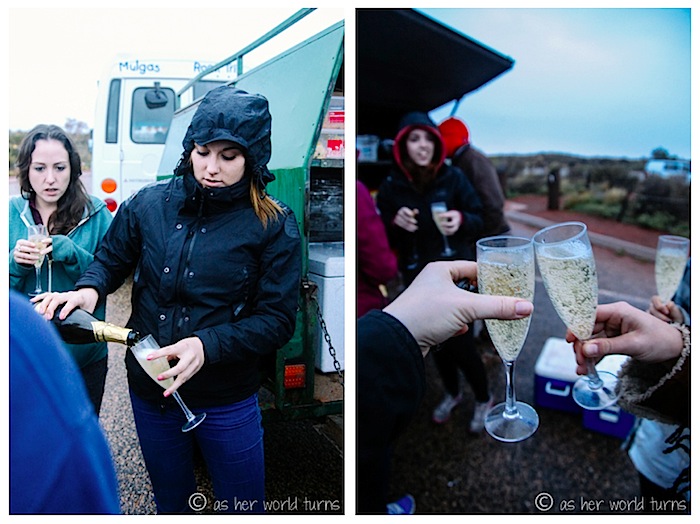


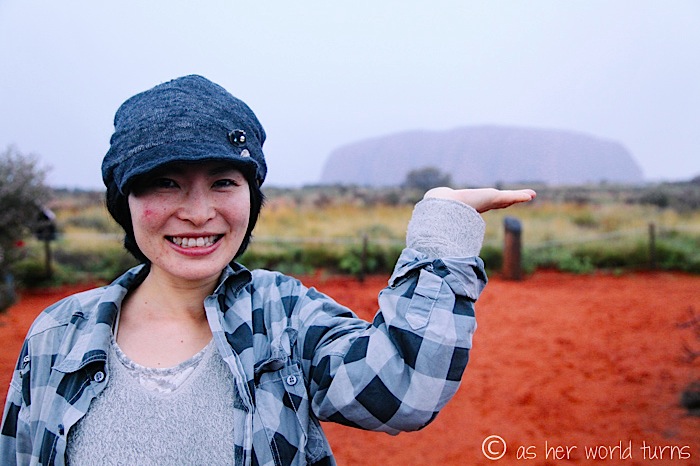
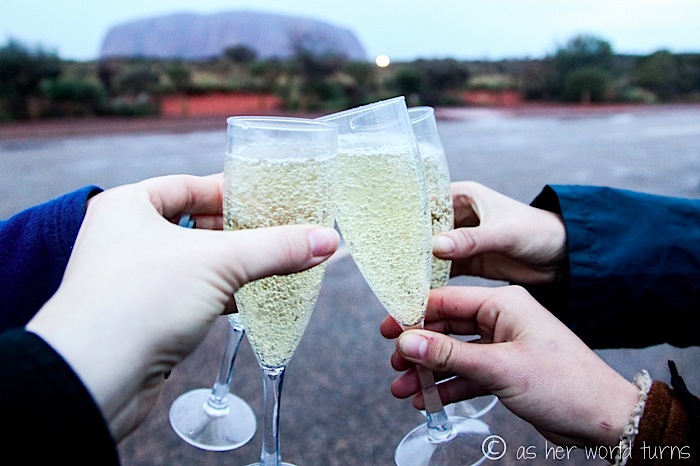
“I’d like to propose a toast…” (Sondheim reference FTW).


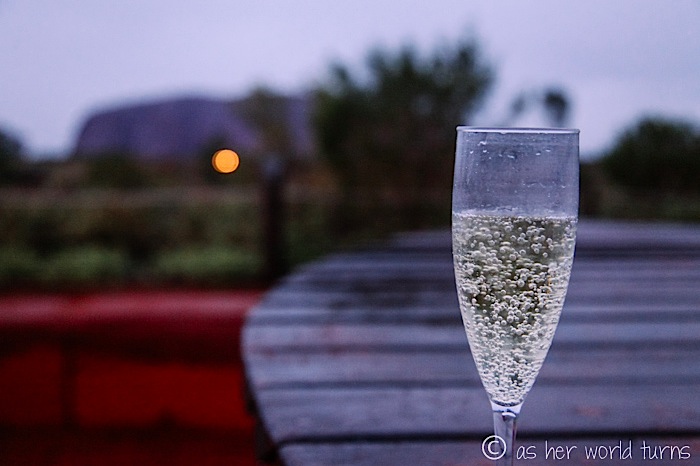
I snap this photo on my iPhone to share on Instagram (username = AsHerWorldTurns). Sad face for the rainy weather.
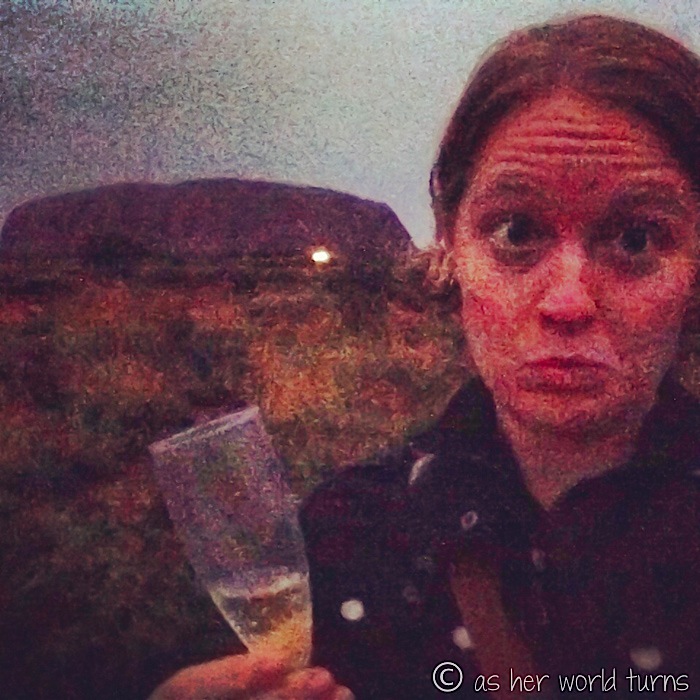
Tomorrow we’ll return for sunrise… unless the clouds foil our plans once more.
This post is sponsored by Muglas Adventures, who generously hosted my 3 day tour of the Outback. Opinions are my own.

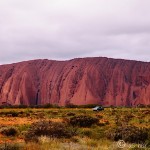
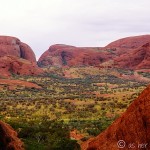
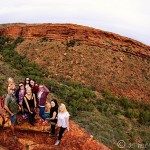
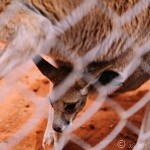
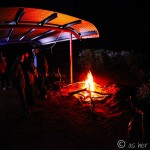
Inspite of the poor weather the rock colors are vibrant and interesting. Good job !!
Thank you! Yes, even in rain the beauty of this place shines through.
where’s your photo in front of the rainy rock? lol
Cute bubbly photos though!
Bubbly was the only redeeming aspect of the rainy “sunset”!